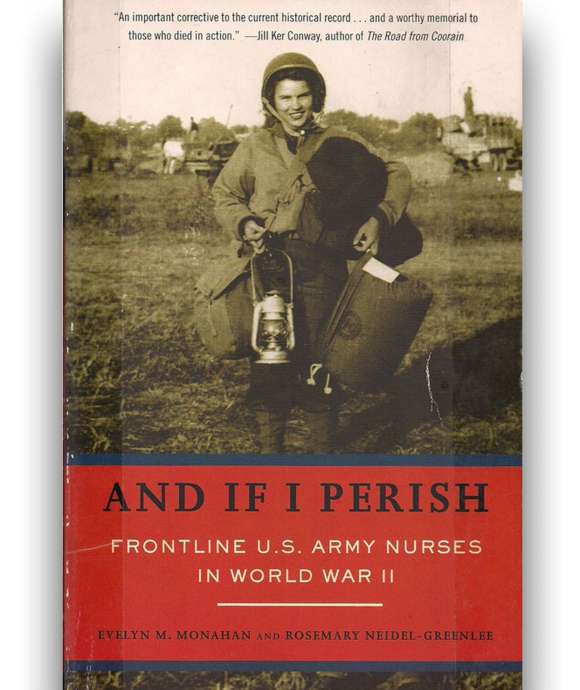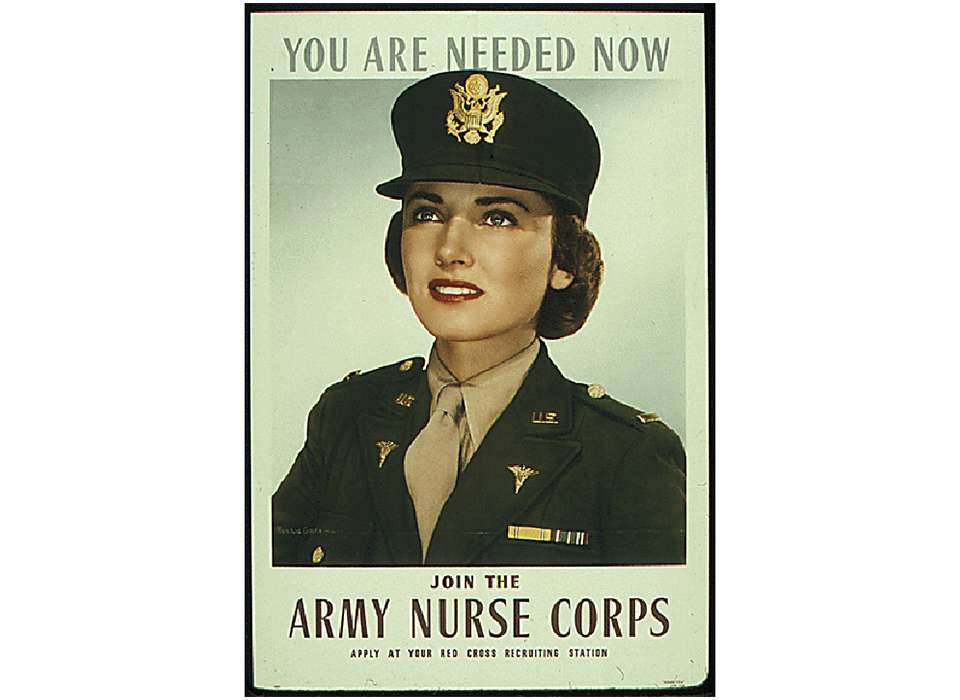In the United States, nurses are honored with National Nurses Week observed each year from May 6-12. During that week, special days are designated to honor student nurses and school nurses with the week culminating in International Nurses Day on May 12. The date bares a special significance to nurses, as May 12 was the birth date of one of the most famous nurses, Florence Nightingale. A British nurse celebrated for her success in treating wounded soldiers during the Crimean War (1853-1856), Nightingale is credited with pioneering and professionalizing modern nursing. Less than 100 years later, nurses were at the forefront of saving lives during World War II.
When, on December 7, 1941, Japanese forces attacked the American fleet at Pearl Harbor, there were fewer than 1,000 nurses in the Army Nurse Corps and just over 800 in the Navy Nurse Corps. Both nursing corps had been established in the first decade of the twentieth century. Women serving in either corps were auxiliary to the established branches, and were not officially part of the armed forces. Ranks were unique to the corps and were not equal to those held by men in service.
With America’s entry into the War, the need for skilled nurses grew exponentially and both the Army and Navy Nurse Corps began to expand. In order to meet the need for both military and civilian nurses, the Cadet Nurse Corps was established in the summer of 1943. The program allowed young women from ages 17-35 to receive free nursing education, room and board, and uniforms. Open to women of all races who had at least a high school degree, the program provided an accelerated curriculum to get quality nurses into hospitals. Nurses with the Cadet Nurse Corps helped fill the shortage of civilian nurses in public hospitals, but also worked in army and navy hospitals. The program lasted from July 1943 until December 1948 and trained almost 125,000 nurses.
Just six months after the attack at Pearl Harbor, the Army Nurse Corps numbers had increased to 12,000. Young women flocked to join one of the only two services available to them at that time in the War. Franklin County, Virginia, native Opal James (now Opal Grapes) was one of those brave young women who joined the Army Nurse Corps.
Born in 1920, Opal had already begun nursing school before the war, and upon finishing school joined the Army Nurse Corps in the summer of 1942. After training in close order drills and other aspects of military life, Opal was one of the thousands of nurses sent to foreign hospitals. While assigned to a hospital in Axminster, England, Opal became a ward nurse and rumors of the invasion France swirled. Busy with drills and keeping the hospital in order, Opal and her fellow nurses gave little thought to the invasion until one morning when they were alerted that patients were likely on their way. Opal was a skilled nurse, ready to provide the best care to her patients, but no amount of training could have prepared her for the emotional experience of treating men wounded by war. In a 2010 interview with The National WWII Museum, Opal recalled an experience that brought the reality of war to her and helped her learn to work through the shock of war.
Opal worked as a nurse in England for two and a half years, sometimes working 16-hour and 18-hour days when there was an influx of patients. She was fortunate to be in a hospital in England. Army and navy nurses were often close to the frontlines in field and evacuation hospitals. Some worked on transport trains or ships, and others called “flight nurses” cared for wounded soldiers aboard transport aircraft. Nurses served in every theater, and some who had been working in the Philippines and Guam in 1941 were even taken prisoner by the Japanese.
In the summer of 1944, the service of army and navy nurses was finally recognized as full military service when women in both Nurse Corps were commissioned as officers into their respective branches. By the end of the War, more than 59,000 women served in the Army Nurse Corps and around 11,000 in the Navy Nurse Corps. Hundreds were awarded commendations for their service, bravery, and sacrifice. Few were killed in combat, but dozens died in accidents at home and abroad. Through their valiant efforts, they helped keep the mortality rate for Americans wounded in action to less than four percent.
The contrasting emotions of being an Army Nurse during World War II are evident in Opal’s reflection, “I am just so glad that I had the opportunity to serve in World War II. It was an awesome experience. There were so many things that were sad and—it was—too bad we had to have wars, but it was just a tremendous experience and an experience that I certainly would never have had in just ordinary nursing.”
Both Nurse Corps still exist today, with men and women proudly serving their nation as nurses. In times of need, they aid American civilians, as the men and women of the USNS Comfort are doing today. On National Nurse’s Day, we thank all nurses, past and present, for their unwavering sense of duty and aid when needed most.
Watch Opal Grapes’ full oral history on The National WWII Museum’s Digital Collections website and see her featured in “Everything We Have” D-Day 6.6.44.

And If I Perish: Frontline US Army Nurses in World War II
For more than half a century these women’s experiences remained untold, almost without reference in books, historical societies, or military archives. A long overdue work of history, And If I Perish is also a powerful tribute to these women and their inspiring legacy.
Kali Martin
Kali Martin is a former Research Historian of The National WWII Museum's Jenny Craig Institute for the Study of War and Democracy.
Cite this article:
MLA Citation:
APA Citation:
Chicago Style Citation:





![Max Fuchs, New York City cantor, sings as Rabbi Sydney [sic] Lefkowitz, Richmond, VA, conducts the first Jewish services from Germany.](/sites/default/files/styles/max_650x650/public/2025-10/image1.jpg)



